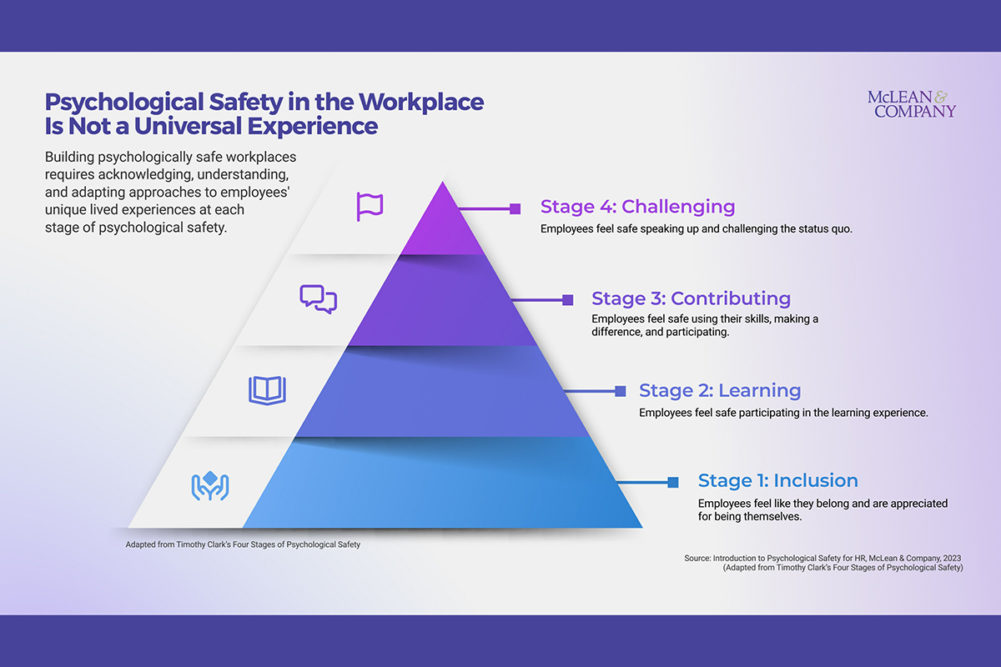In March, Toronto-based, global HR research and advisory firm McLean & Company published a study on psychological safety in the workplace with an intersectional approach.
“Establishing psychological safety in the workplace is not a quick fix or a simple checklist item on the organizational to-do list,” said Elysca Fernandes, director of HR research and advisory services at McLean & Company. “Successfully building psychologically safe workplaces requires acknowledging that employees’ unique intersectional characteristics influence how they experience psychological safety at work. This is why conversations around diversity, equity, and inclusion are one of the first opportunities to recognize that psychological safety is not a universal experience and approaches to fostering safety must meet individual needs.”
McLean & Company adapted Timothy Clark’s “Four Stages of Psychological Safety” into the following tool for employers:
- Inclusion – Employees feel like they belong and are appreciated for being themselves.
- Learning – Employees feel safe participating in the
- learning experience.
- Contributing – Employees feel safe using their skills, making a difference, and participating.
- Challenging – Employees feel safe speaking up and challenging the status quo.
McLean & Company also provided the following 3 categories to work on:
1. Organizational norms
Shared standards of acceptable behavior that are socially enforced and guide all interactions across the organization. For example, establishing ground rules for DEI sessions where people share their personal experiences.
2. Leadership behaviors
Actions, values, and characteristics that leaders incorporate to motivate their team and achieve their goals. This may look like practicing grace and humility by apologizing for mistakes rather than acting defensively.
3. Artifacts
The organization’s processes, policies, and procedures, such as introducing and consistently reinforcing an anti-discrimination policy.
This article is an excerpt from the April 2024 issue of Supermarket Perimeter. You can read the entire DEI feature and more in the digital edition here.

